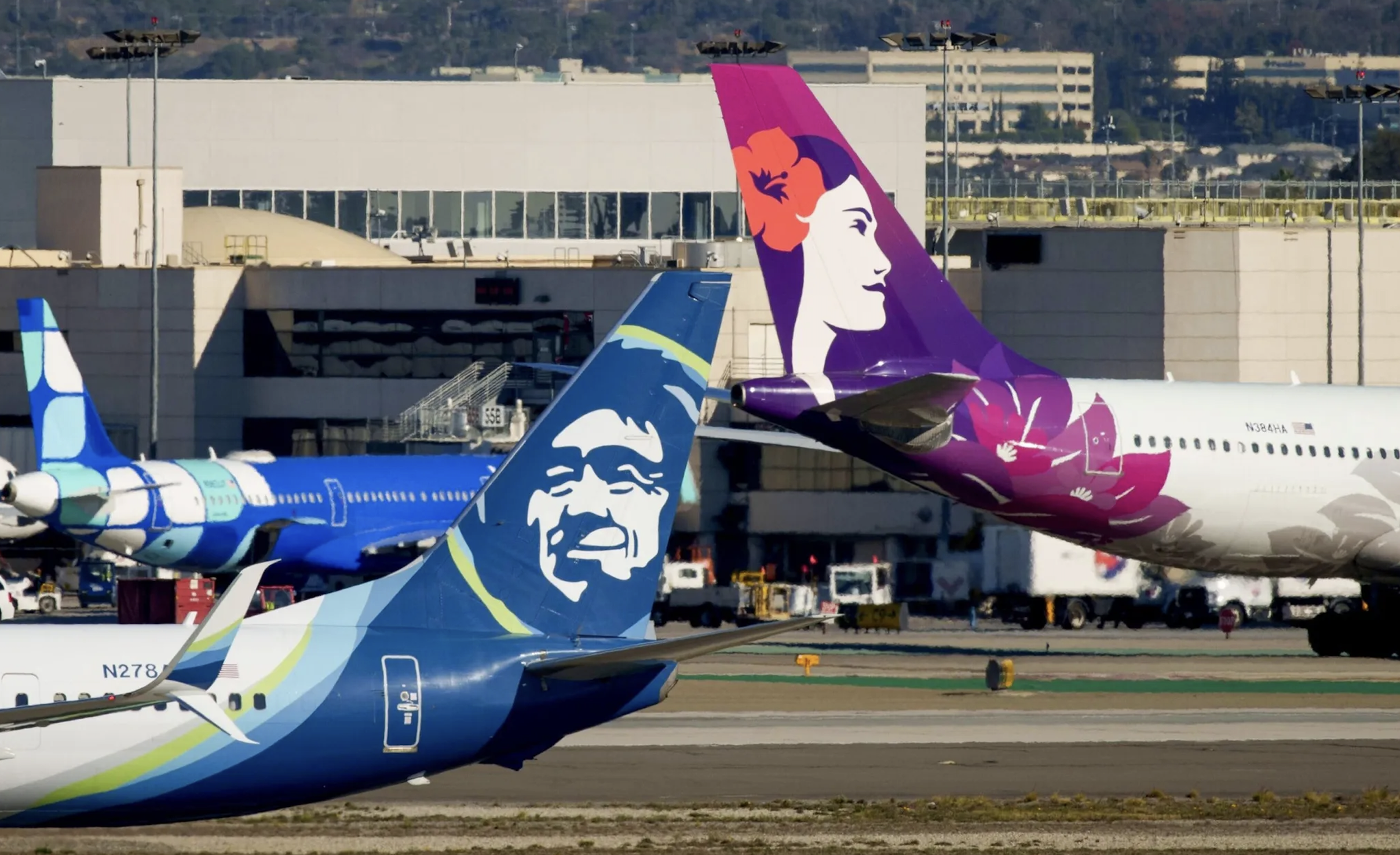Alaska Air Group Takes Control of Key Hawaiian Routes: Here’s What could Change.
The Department of Transportation just handed over Hawaiian’s most prized route authorities, codeshare approvals, and international flying rights to Alaska Air Group, with no objections and barely a ripple in the travel world.
For those of us who call Hawaii home or travel to and from the islands regularly, this quiet but historic decision is anything but insignificant. It’s a major shift that marks the next phase of the Alaska–Hawaiian merger, and it could impact everything from award travel and interisland flights to who operates your next trip to the mainland or Japan.
Alaska Is Taking Over Hawaiian’s Operating Certificate, Here’s What That Means
In July 2024, the U.S. Department of Transportation approved Alaska Airlines’ request to assume Hawaiian’s operating certificate. At first glance, it may sound like Alaska is replacing Hawaiian, but that’s not exactly how it works.
Here’s the key detail: the certificate wasn’t simply transferred from Hawaiian Airlines to Alaska Airlines. It was transferred to the Alaska Air Group — the parent company that owns Alaska Airlines, Horizon Air, and Hawaiian Airlines. The Alaska Air Group now has the authority to assign any of its three carriers to operate routes that were previously under Hawaiian’s authority.
This type of certificate consolidation is commonplace in airline mergers. It’s primarily an internal operational move that simplifies compliance and oversight. It doesn’t automatically mean Hawaiian Airlines flights are being handed over to Alaska-branded jets tomorrow.
What This Means for You, the Hawaii-Based Traveler
Let’s break this down from a Hawaii Reward Travel perspective, here’s what you need to know:
⚠️ What Could Change
Route optimization is likely. The Alaska Air Group will prioritize routes that offer the best return on investment. That may lead to shifting capacity or eliminating underperforming flights, and sadly.. potentially shifting away from Hawaii as a major hub to/from Asia.
Operational Changes Could Impact Interisland Flights. The Alaska Air Group now has full flexibility to move aircraft, staff, and other resources between its three carriers: Alaska, Horizon, and Hawaiian to maximize efficiency. While Hawaiian’s interisland network is still operating as usual, this new operational freedom gives AAG the ability to reevaluate flight frequency, aircraft size, crew assignments, and pricing. No official changes have been announced yet, but interisland service is likely to evolve as AAG seeks to optimize routes and reduce overhead
Is This Just Another Airline Merger Playbook?
Yes, this is textbook airline merger behavior. Just like we saw with Delta + Northwest, American + US Airways, or United + Continental, the goal is to reduce overhead, combine resources, and create long-term profitability.
The Alaska Air Group is following the same steps:
Consolidate operating certificates
Streamline operations
Integrate loyalty programs (coming August 2025)
Reallocate assets for stronger returns
From a business standpoint, this is smart. From a traveler’s standpoint? It’s all about how these changes are executed — and whether they add value or inconvenience.
A Recap of Why This Happened: Hawaiian’s Struggles Behind the Scenes
This move is more than administrative. It’s part of a larger financial and strategic shift to rescue Hawaiian Airlines from long-term instability.
The last year Hawaiian Airlines posted a profit was 2019. Since then, it has endured mounting financial losses, a result of its heavy reliance on one revenue stream: travel to and from Hawaii. Unlike other airlines that have domestic, international, and cargo diversification, Hawaiian’s business model left it especially vulnerable to downturns in tourism, pandemics, or rising operating costs.
By 2023, Hawaiian was heading toward a potential bankruptcy scenario. The Alaska Air Group’s acquisition likely prevented a full collapse — which would have resulted in lost jobs, worthless miles, and refunded tickets hanging in limbo.
So, while the headlines might focus on “takeover” language, the reality is that Alaska stepped in to stabilize a legacy airline that was bleeding cash and running out of time.
Our Take from Hawaii Reward Travel
For locals, this story isn’t about lost identity, it’s about survival. Hawaiian Airlines was not built to weather modern aviation volatility alone. While many of us feel nostalgic pride for the hometown carrier, the hard truth is that it was on life support. The Alaska merger brings hope of sustainability and potentially improved services if the transition is handled with care.
Yes, changes are coming. But for now, this certificate move is just another step in a process that likely saved Hawaiian Airlines from extinction.
We’ll continue tracking this closely for our Hawaii-based travelers and clients. Whether you’re wondering how your miles will transfer, what credit card strategies to use before the merger, or how to fly smarter between the islands.
Mahalo,
Scott Kobayashi | Hawaii Reward Travel

